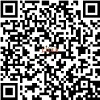(2) * Martin Ebner
(3) Philipp Leitner
*corresponding author
AbstractIn recent years, the interest in Massive Open Online Courses (MOOCs) and Learning Analytics research have highly increased in the areas of educational technologies. The emergence of new learning technologies requires new perspectives on Educational Design. When the areas of MOOCs, Learning Analytics and Instructional Design developed, the interest and connection between these three concepts became important for research. Learning Analytics provides progress information and other individualized support in MOOC settings where teachers are not able to provide learners with individual attention, which would be possible in a traditional face-to-face setting. Through collective views over the learning process, the overall progress and performance are indicated. Moreover, results can lead to Educational Design improvements. Every time a learner interacts with the system, data is created and collected. Many Educational Designers do not take advantage of this data and thereby, losing the possibility to impact the course design in a powerful way. This research work strongly focuses on the implication of Learning Analytics for Educational Design in MOOCs. Many methods and algorithms are used in the analytical learning process in MOOCs. Currently, a great variety of learning data exists. First, well-known Instructional Design patterns from different models were collected and listed. In a second step, through the collected data is used to point out which of these patterns can be answered by using Learning Analytics methods. The findings of the study show that it is possible to better understand which environments and experiences are best suited for learning by analyzing students' behaviors online. These results have great potential for a rapidly and easier understanding and optimization of the learning process for educators.
KeywordsMOOC; Educational Design; ADDIE; Learning Analytics
|
DOIhttps://doi.org/10.31763/ijele.v4i2.641 |
Article metrics10.31763/ijele.v4i2.641 Abstract views : 2979 | PDF views : 1002 |
Cite |
Full Text Download Download
|
References
[1] G. Siemens and P. Long, “Penetrating the fog: Analytics in learning and education,†Educ. Rev., vol. 46, no. 5, pp. 30–32, 2011. Available at: Google Scholar
[2] V. Lim, L. Wee, J. Teo, and S. Ng, “Massive Open and Online Courses and Open Education Resources in Singapore,†SEAMEO Secretaria. pp. 1–10, 2017. Available at: Google Scholar
[3] M. Khalil and M. Ebner, “A STEM MOOC for school children—What does learning analytics tell us?,†in 2015 International Conference on Interactive Collaborative Learning (ICL), 2015, pp. 1217–1221, doi: 10.1109/ICL.2015.7318212.
[4] A. McAuley, B. Stewart, G. Siemens, and D. Cormier, “The MOOC model for digital practice.†Massive Open Online Courses, pp. 1–63, 2010. Available at: Google Scholar
[5] Y. Tabaa and A. Medouri, “LASyM: A Learning Analytics System for MOOCs,†Int. J. Adv. Comput. Sci. Appl., vol. 4, no. 5, pp. 113–160, 2013, doi: 10.14569/IJACSA.2013.040516.
[6] T.-Y. Yang, C. G. Brinton, C. Joe-Wong, and M. Chiang, “Behavior-Based Grade Prediction for MOOCs via Time Series Neural Networks,†IEEE J. Sel. Top. Signal Process., vol. 11, no. 5, pp. 1–13, 2017, doi: 10.1109/JSTSP.2017.2700227.
[7] M. Khalil and M. Ebner, “Learning analytics: principles and constraints,†in EdMedia+ Innovate Learning, 2015, pp. 1789–1799. Available at: Google Scholar
[8] J. Manyika et al., Big data: The next frontier for innovation, competition, and productivity. McKinsey Global Institute, 2011. Available at: Google Scholar
[9] W. Greller and H. Drachsler, “Translating learning into numbers: A generic framework for learning analytics,†J. Educ. Technol. Soc., vol. 15, no. 3, pp. 42–57, 2012. Available at: Google Scholar
[10] K. Mangaroska and M. Giannakos, “Learning analytics for learning design: A systematic literature review of analytics-driven design to enhance learning,†IEEE Trans. Learn. Technol., vol. 12, no. 4, pp. 516–534, 2018. doi: 10.1109/TLT.2018.2868673
[11] I. Shibley, K. E. Amaral, J. D. Shank, and L. R. Shibley, “Designing a blended course: Using ADDIE to guide instructional design,†J. Coll. Sci. Teach., vol. 40, no. 6, pp. 80–85, 2011. Available at: Google Scholar
[12] R. D. Tennyson, F. Schott, S. Dijkstra, and N. M. Seel, Instructional Design: International Perspectives. Theory, research, and models, vol. 1. Routledge, 1997. Available at: Google Books
[13] R. A. Reiser and J. V Dempsey, Trends and issues in instructional design and technology. Pearson Boston, MA, 2012. Available at: Google Books
[14] B. M. Ngussa, “Application of ADDIE model of instruction in teaching-learning transaction among teachers of mara conference adventist secondary schools, tanzania,†J. Educ. Pract., vol. 5, no. 25, pp. 1–11, 2014. Available at: Google Scholar
[15] J. Chacon and D. Hernández-leo, Learning design family tree to back reuse and cooperation. Citeseer, 2014. Available at: Google Scholar
[16] H. Beetham and R. Sharpe, Rethinking Pedagogy for a Digital Age. Routledge, 2013. doi: 10.4324/9780203078952
[17] D. R. Garrison and M. Cleveland-Innes, “Facilitating Cognitive Presence in Online Learning: Interaction Is Not Enough,†Am. J. Distance Educ., vol. 19, no. 3, pp. 133–148, Sep. 2005, doi: 10.1207/s15389286ajde1903_2.
[18] M. Parry, “Online, bigger classes may be better classes,†Chron. High. Educ., vol. 57, no. 2, pp. 19–22, 2010. Available at: Google Scholar
[19] J. R. Drake, M. T. O’Hara, and E. Seeman, “Five Principles for MOOC Design: With a Case Study,†J. Inf. Technol. Educ. Innov. Pract., vol. 14, pp. 125–143, 2015, doi: 10.28945/2250.
[20] N. Bos and S. Brand-Gruwel, “Student differences in regulation strategies and their use of learning resources,†in Proceedings of the Sixth International Conference on Learning Analytics & Knowledge - LAK ’16, 2016, pp. 344–353, doi: 10.1145/2883851.2883890.
[21] E. Lackner, M. Kopp, and M. Ebner, “How to MOOC?–A pedagogical guideline for practitioners,†in Proceedings of the 10th International Scientific Conference" eLearning and Software for Education", Bucharest, 2014, pp. 1–8. Available at: Google Scholar
[22] L. Guà rdia, M. Maina, and A. Sangrà , “MOOC design principles: A pedagogical approach from the learner’s perspective,†elearning Pap., no. 33, pp. 1–6, 2013. Available at: Google Scholar
[23] S. Cooper and M. Sahami, “Reflections on Stanford’s MOOCs,†Commun. ACM, vol. 56, no. 2, pp. 28–30, Feb. 2013, doi: 10.1145/2408776.2408787.
[24] T. Daradoumis, R. Bassi, F. Xhafa, and S. Caballe, “A Review on Massive E-Learning (MOOC) Design, Delivery and Assessment,†in 2013 Eighth International Conference on P2P, Parallel, Grid, Cloud and Internet Computing, 2013, pp. 208–213, doi: 10.1109/3PGCIC.2013.37.
[25] K. F. Hew, “Promoting engagement in online courses: What strategies can we learn from three highly rated MOOCS,†Br. J. Educ. Technol., vol. 47, no. 2, pp. 320–341, Mar. 2016, doi: 10.1111/bjet.12235.
[26] H. Duisterwinkel, H. van der Aalst, and P. den Brok, “Towards a learning-centered design framework for blended Learning,†in The Open and Flexible Higher Education Conference, 2014, pp. 120–141. Available at: Google Scholar
[27] D. Clow, “MOOCs and the funnel of participation,†in Proceedings of the Third International Conference on Learning Analytics and Knowledge - LAK ’13, 2013, p. 185, doi: 10.1145/2460296.2460332.
[28] L. E. Stanley, “A qualitative study of instructional design in massive open online courses (MOOCs).†Capella University, 2015. Available at: Google Scholar
[29] Y. Mor, R. Ferguson, and B. Wasson, “Editorial: Learning design, teacher inquiry into student learning and learning analytics: A call for action,†Br. J. Educ. Technol., vol. 46, no. 2, pp. 221–229, Mar. 2015, doi: 10.1111/bjet.12273.
[30] K. Michos, K. Manathunga, and D. Hernández Leo, “Connecting pattern-based learning designs with analytics: The case of the PyramidApp,†in European Conference on Technology Enhanced Learning, 2016, pp. 1–11. Available at: Google Scholar
[31] L. Lockyer, E. Heathcote, and S. Dawson, “Informing Pedagogical Action: Aligning Learning Analytics with Learning Design,†Am. Behav. Sci., vol. 57, no. 10, pp. 1439–1459, Oct. 2013, doi: 10.1177/0002764213479367.
[32] J. Melero, D. Hernández-Leo, J. Sun, P. Santos, and J. Blat, “How was the activity? A visualization support for a case of location-based learning design,†Br. J. Educ. Technol., vol. 46, no. 2, pp. 317–329, Mar. 2015, doi: 10.1111/bjet.12238.
[33] C. Giovannella, C. Spadavecchia, and A. Camusi, “Educational Complexity: Centrality of Design and Monitoring of the Experience,†in Symposium of the Austrian HCI and Usability Engineering Group, 2010, pp. 353–372, doi: 10.1007/978-3-642-16607-5_24.
[34] C. Giovannella, S. Carcone, and A. Camusi, “What and how to monitor complex educative experiences. Toward the definition of a general framework,†Interact. Des. Archit. J., vol. 11, no. 12, pp. 7–23, 2011. Available at: Google Scholar
[35] Y. Wang, D. Davis, G. Chen, and L. Paquette, “Workshop on integrated learning analytics of MOOC post-course development,†in Proceedings of the Seventh International Learning Analytics & Knowledge Conference, 2017, pp. 506–507, doi: 10.1145/3027385.3029430.
[36] M. E. D. Van den Bogaard, H. Drachsler, H. Duisterwinkel, J. Knobbout, J. Manderveld, and M. De Wit, “Learning Analytics in Education Design: A Guide.†University of Amsterdam, Amsterdam, pp. 1–20, 2016. Available at: Google Scholar
Refbacks
- There are currently no refbacks.
Copyright (c) 2022 Hanan Khalil, Martin Ebner, Philipp Leitner

This work is licensed under a Creative Commons Attribution-ShareAlike 4.0 International License.

International Journal of Education and Learning
ISSNÂ 2684-9240
Published by Association for Scientific Computing Electronics and Engineering (ASCEE)
W : http://pubs2.ascee.org/index.php/ijele
E : zalik@ascee.org

This work is licensed under a Creative Commons Attribution-ShareAlike 4.0 International License.






















